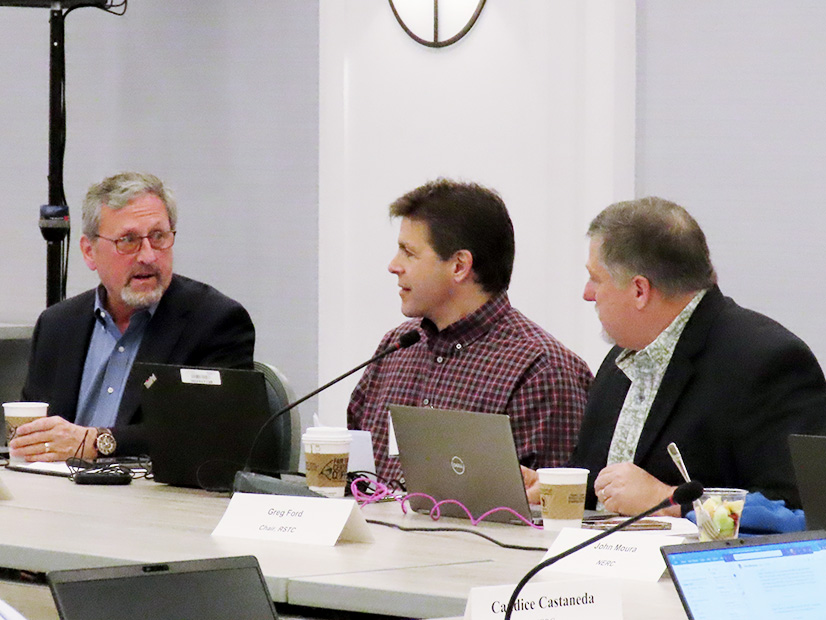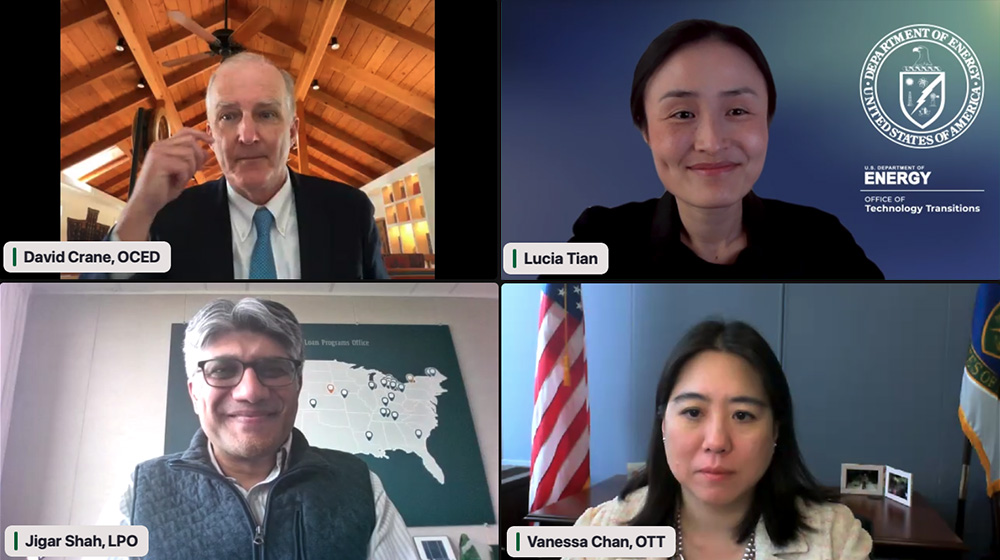WASHINGTON — Panelists at the Electric Power Supply Association’s (EPSA) Competitive Power Summit on Tuesday warned that the clean energy transition could be slowed or side-tracked by consumers if their monthly energy bills continue to rise.
“We’re at a crossroads where costs are going nowhere but up,” said Christine Tezak, managing director at industry analysts ClearView Energy Partners. “And the question is, are we going to be able to make a value proposition so that the consumer feels they’re getting value for the increased cost?
“It’s going to be necessary to convince consumers that not only are they getting a lower-carbon alternative, but they’re getting increased reliability and better deliverability in that product,” Tezak said. “Because it’s not just about keeping … the body warm, but it’s not having my electricity bill be something that speaks to me every month in a negative way.”
From McKinsey to PJM to the International Energy Agency, estimates of the cost of the global energy transition, and the investments needed in the coming years, generally fall within a range of $1 trillion to $4 trillion annually through 2050. But the EPSA panelists had different view on how those figures might play out and what potential pathways to a reliable transition might look like.
Stacey Doré, chief strategy and sustainability officer for Vistra (NYSE:VST), sees maintaining and expanding competitive power markets as an effective way to keep costs down for consumers, arguing that utility bills in competitive markets are lower than in regulated markets. (See After a Quarter Century Industry Experts Still Split on Restructuring.)
“As a competitive retailer, a power generator, our shareholders are taking on a lot of risk [for] these higher costs as opposed to just passing them through to the ratepayer,” Doré said.
At the same time, Vistra’s investment strategy is centered on shareholder returns, she said. For example, with the acquisition of Energy Harbor, owner of four nuclear reactors in Ohio, Pennsylvania and West Virginia, Vistra now has the second largest portfolio of carbon-free dispatchable power in the country, according to a company press release. (See Vistra Pays more than $3 Billion for Energy Harbor.)
The company has committed to reducing its greenhouse gas emissions 60% below 2010 levels by 2030.
Representing Wall Street’s perspective, Anthony Crowdell, managing director at Mizuho Americas, an investment banking firm, said investors have gotten “very used to very attractive earnings growth rates” from regulated electric utilities, which receive guaranteed rates of return on their capital spending. Investors’ concerns now turn on the likelihood that inflation and higher electricity bills will trigger regulatory pushback ― limiting rates of return ― and whether “what utilities have promised in the past, they may not be able to deliver,” Crowdell said.
But most consumers don’t understand or care about competitive versus regulated markets or the skittishness of equity investors, said David Springe, executive director of the National Association of State Utility Consumer Advocates (NASUCA).
“They just know at the end of the day, the bills are going up,” Springe said. “It’s the same kilowatt-hours that were turning the lights on 20 years ago and turning the lights on 10 years ago and turning the lights on last week. It’s the same kilowatt-hour; it just costs 100% or 200% more than it used to. You’re not going to explain that to customers, and you will see political pushback. …
“The same people that just arbitrarily say we’re going to have 100% [electric vehicles] by 2035 are the same people that will arbitrarily tell utilities to stop raising rates,” he said.
Defining ‘Affordability’
Exactly how to balance the conflicting priorities of the transition has become an ongoing conversation within the energy industry and at conferences like the Competitive Power Summit. EPSA’s membership is predominately independent power producers who advocate for competitive wholesale power markets.
Climate advocates point to the mounting physical and financial impacts of extreme weather events, as well as the new federal subsidies for clean power in the Inflation Reduction Act as clear signs for acceleration. Releasing the U.N.’s 6th Assessment Report Synthesis on climate change on Monday, Secretary General António Guterres called for the largest industrialized nations of the world to phase out all coal-fired generation by 2030. (See Guterres: G20 Nations Should Commit to Net Zero by 2040.)
But industry insiders like Doré argue that reliability and cost should determine the pace of the transition. Wholesale power markets have a vital role to play, sending appropriate price signals to advance policy objectives while minimizing price increases for consumers, she said.
Pace is “the key to the transition,” Doré said. “Our markets need to send the right price signals to build the kind of generation that we need.”
The war in Ukraine, for example, has opened questions about the need for new gas-fired generation, Doré said. “We look all the time at whether it’s economic to build new gas plants. In most markets today, it’s not because the investment signals are not there.”
She called for “an honest conversation about what is the right pace. What is the all-of-the-above strategy [for] getting eventually to deep decarbonization? I think we have to talk about investment signals. We have to talk about demand response. We have to talk about all the different methods of getting there. But we also have to be realistic about what the goals are,” Doré said.
Springe countered that the focus on building big projects to push the transition forward could be counterproductive, given the long lead times and resulting high costs needed to permit and construct such installations.
“I worry that there’s sort of a focus on big and fancy, and where the money and incentives should be is local, close: demand response, energy efficiency, solar, batteries; things that are near, because we can build those. So, I worry that we’re going to lose speed, in a sense, chasing the big and really miss out on an opportunity to accomplish the small,” he said.
Another part of the problem is that few states or regulatory commissions have a legal or structural definition of “affordability,” Springe said. While not offering a definition of his own, he called for “a very specific process to define what [affordability] is, whether you have it in your statutes or you don’t,” he said. The process also needs to be part of project planning, Springe said, “not after they’ve built an asset and have come to bring it and integrate it” into a rate base.
“You’ve got to define a metric, and you’ve got to do it up front,” he said. “What is it? How do you enforce it? … And how many things can we actually build in the state in that affordability metric?”
How We Buy Electricity
Tezak took a more market-based approach to the issue of ordering priorities, noting first that the emerging technologies that will be needed for long-term decarbonization “require time to be demonstrated, for you have to have a couple of [projects] get online before anybody makes money.” A “real portfolio concept” for procuring capacity could incorporate “a lot of character attributes,” she said.
One way forward could be “rebundling some of the capacity for long-term procurement with [clean energy] development … and coming to grips with what that capacity is,” she said. “The capacity market doesn’t have to be limited to the auction. I think to build faith back into markets, we may have to step away from defining them solely as a terrifically functioning auction because it isn’t how you buy anything else, and it’s not how we’re buying energy for this transition,” Tezak said.
“We’re talking about [power purchase agreements]; … we’re talking about interconnection; we’re talking about all that stuff, and the perfect, well functioning auction that we had for a couple of years seems to exist in a parallel universe,” she said. “Is it time to take the plunge of talking about not doing tweaks but doing major changes and what that means? And that’s hard because investors don’t like uncertainty and many of them … really dislike change.”
But Doré doesn’t think the markets need fixing per se. “The problem is we’re not allowing the markets to function the way that they were designed to function,” she said. “Things like market caps or trying to adjust capacity accreditation in a way that disadvantages dispatchable generation are interferences in the market that are going to scare away investors. …
“The problem is we have so many changes in our markets every time the legislature meets or every time the commission meets or every time FERC or one of the ISOs meet. … That just injects a lot of uncertainty for investors,” she said. “So, the ground is always shaking beneath you a bit.”
Mizuho’s Crowdell agreed that investors are looking for stability in markets across a range of variables, such as cost recovery after extreme weather events. Should shareholders or consumers pay, and who decides? Securitizing costs after an extreme weather event could reduce impact on customers’ bills, but in the long term, the customers who end up paying 10 or 20 years down the road weren’t even around when the costs were incurred, he said.
“When you think about the regional market, their concerns are different that the actual individual state,” which could also be different from those of individual legislators or regulators, he said. And legislative turnover in states continues to accelerate.
“We’ve seen much quicker changes in the state house,” he said, with the projects and policies of one administration being rolled back by a new set of players. “The equity holders are trying to balance [to] see where it’s going.”
But the panel circled back to the core issue of whether consumers might reject any further rate increases for clean energy. While consumer advocates are often uncomfortable with such questions, Springe said, “we really need to have a much broader discussion around what the price is going to be and figuring out how to match that up with when assets or resources appear.”
The special rates some utilities have introduced that encourage charging EVs at specific times of the day are one example of the kinds of rate design that will be needed going forward, Springe said. Doré agreed, pointing to Vistra’s Free Nights and Solar Days pricing plan in Texas that “encourages customers to use energy at the time of day when there’s less burden on the system.”
“Those kinds of plans are not possible unless you have a robust, competitive retail market,” she said. “If you want customer innovation, you’ve got to have competition.”




